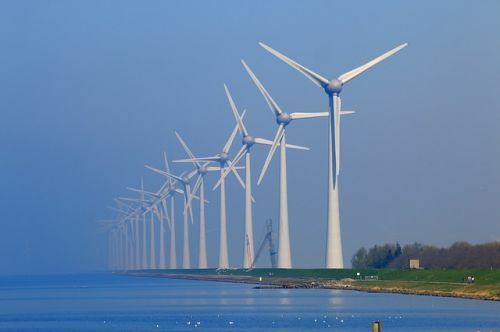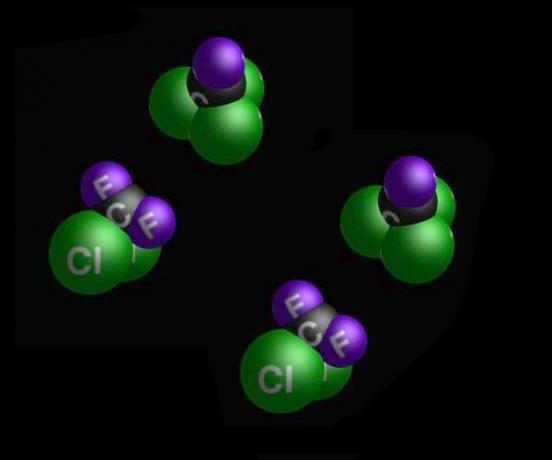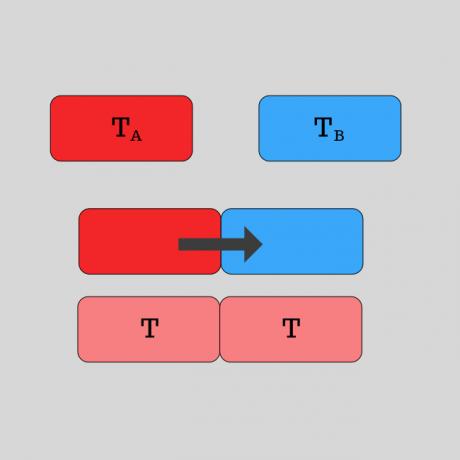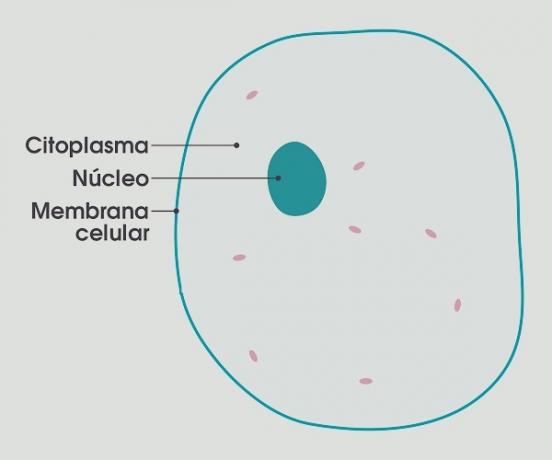Wind energy is the energy that comes from the wind. It is produced by transforming the kinetic energy of wind into electrical energy. This transformation is performed by a wind turbine, also called wind turbine.
The term eolian comes from the Latin aeolicus, which belongs to Aeolus, the god of winds in Greek mythology.
The energy produced by the winds is renewable because it doesn't run out, and it is clean, as it does not produce waste or emit greenhouse gases - responsible for the intensification of global warming.
 Wind turbines for the production of electricity.
Wind turbines for the production of electricity.
Due to its advantages, it is considered an alternative to energy produced by fossil fuels, which are polluting, and to hydroelectric energy, whose environmental impacts and costs are higher.
Wind energy has been used for thousands of years for activities such as grain milling and water pumping, but it started in the 1970s, with the oil crisis, that it started to be used for the generation of electric energy.
The first wind turbine was installed in Denmark in 1976 and today the following countries lead this type of energy production:
China, U.S and Germany.know more about greenhouse effect and global warming.
How does wind energy work?
For the production of electrical energy from the movement of air masses, turbines called wind turbines, which are shaped like pinwheels. Energy is produced by rotating its blades.
For the production of mechanical energy, such as for pumping water, mills and pinwheels.
These turbines must be placed in locations with adequate characteristics for this energy production and through environmental impact studies.
To produce wind energy it is necessary that the density of the air mass in the region is equal to or greater than 500 watts per square meter, with a height of 50 meters and a wind speed of 7 or 8 meters per second.
Any changes in wind speed can affect the performance of these turbines, so it is very A detailed study on the behavior of air masses in the region where a plant is to be installed is important. wind power.
understand what it is wind and kinetic energy.
wind energy in Brazil
The main energy source in Brazil is water, about 90% of electricity consumed by Brazilians come from hydroelectric plants.
In recent years, however, the use of wind energy has grown in the country. Due to weather conditions in some regions of Brazil, the country's wind potential is quite relevant.
It is estimated that 71 thousand km2 Brazilian territory presents adequate conditions for the installation of wind power plants. This region would correspond to the production of 272 Terawatt-hours per year, that is, 64% of all energy consumed in the country.
In addition to producing less impact than hydroelectric plants, investing in wind energy is important for the diversification of the energy matrix from the country.
The region North East it is the most suitable for the production of this type of energy, followed by the southern region. Among the main wind farms in the country are:
- Alto Sertão I and II Wind Complex: located in Bahia, it has a production capacity of 680.5 megawatts of electricity.
- Osório Wind Complex: located in Rio Grande do Sul, it has a production capacity of 300 megawatts of electricity.
In 2002 the Alternative Sources of Electric Energy (Proinfa) program was created with the aim of stimulating investment in alternative and renewable sources of energy generation.
understand what it is energy matrix and Hydro-electric energy.
Advantages of wind energy
Wind energy is a renewable and clean energy source and the production of electricity from it is cheaper than other sources, such as hydropower.
Unlike fossil fuels such as oil and coal, winds are an inexhaustible resource, which means that this resource is not depleted with its use.
know more about renewable energy
Disadvantages of wind energy
One of the disadvantages of wind energy production is the intermittency of the winds, which undergo changes throughout the year that can vary the efficiency of the turbines.
Despite being a clean energy, there are impacts in the regions where wind power plants are installed. One of the negative impacts is the noise pollution.
Wind turbines produce loud noises that can affect ecosystems and the lives of local people. Noise pollution is related to some impacts on health, such as increased stress and psychological disorders.
Another negative externality affects the birds in the region, which, as they fly close to the turbines, are often hit by the blades, and can suffer serious injuries and even death.
There are studies that relate the change in migratory flows of birds to the installation of wind farms.
Meet the types of pollution.



